Original URL: https://www.theregister.com/2007/07/20/review_intel_core_2_duo_e6750/
Intel Core 2 Duo E6750 2.67GHz desktop processor
Bargain?
Posted in Channel, 20th July 2007 14:47 GMT
Review Earlier this week, we reviewed the impressive yet ridiculously expensive Intel Core 2 Extreme QX6850. Now it's the turn of another processor Intel announced this week, one that you can actually afford, the Core 2 Duo E6750.
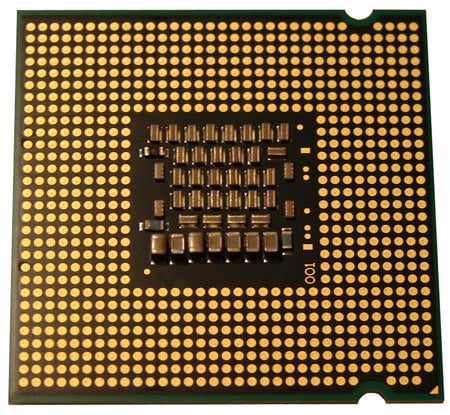
Intel Core 2 Duo E6750
Intel's new 1333MHz frontside bus hasn't made a dramatic difference to the quad-core Extreme processor, but it's a step in the right direction. Or rather, it's yet another step in the right direction as the Core 2 steamroller continues to crush the AMD opposition. If you glance at our review of the MSI P35 Diamond motherboard with the 2.93GHz QX6800 and the 3GHz QX6850 installed, you'll see that the move to the 1333MHz FSB adds one or two percentage points of performance and you get a similar boost from the DDR 3 memory the board supports. However, DDR 3 costs so much more than common or garden DDR 2 that the small gain in performance it brings doesn't make economic sense.
The real shocker is that Intel's latests pricing plan makes some 1333MHz CPUs cheaper than 1066MHz parts.
At the upper end of the desktop processor market, this doesn't make a lot of odds, as the QX6800 costs £750 while the new QX6850 is £680, so both processors are beyond the reach of anyone on a normal income.
Move down the scale and we find the E6700 at £199, which is good value, but the new E6750 is listed on-line at £149, and that's a bargain. Both processors have the same 2.67GHz clock speed, 4MB of L2 cache but that £50 price differential clearly makes the 1333MHz FSB the way to go at upgrade time.
This is especially true if you can drop the E6750 into your current P965 motherboard in place of a slower Core 2 Duo or - God forbid - a single-core Pentium 4.
So do those extra 267 million clock cycles each second make any big difference to the performance the two Core 2 Duos offer?
Once again, we used MSI' P35 Diamond as the basis for our tests. We plugged in 2GB of Kingston KHX11000 1066MHz DDR 3 memory - rated at 7-7-7-20 - and an Nvidia GeForce 8600 GTS-based graphics card.
PCMark05 results
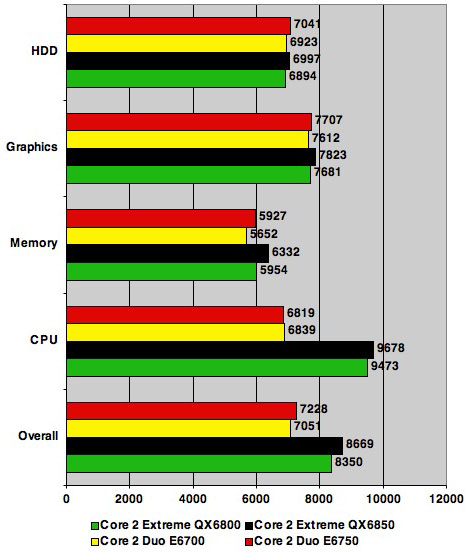
Longer bars are better
Performance results
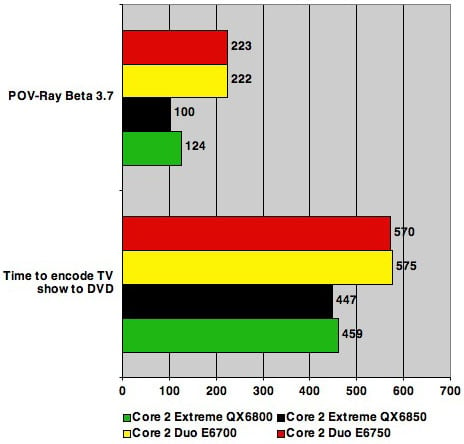
Timings in seconds
Shorter bars are better
As you can see from the charts on the previous page, there's not a lot in it, certainly not in 'real world' application-based tests like POV-Ray and DVD encoding - what's five seconds when you're encoding a video?
PCMark05 likewise confirms the slight gain the 1333MHz FSB brings a boost of a mere percentage point to most tests except Memory, where those extra cycles give you a four per cent increase on PCMark scores. The FSB factor is also highlighted by our SiSoft Sandra readings.
Incidentally, we put the difference in PCMark05 CPU scores between the E6700 and E6750 down to the inherent errors in PCMark05's readings - had we run the benchmarks more time, these errors would be averaged out and we'd get CPU scores for each processor that are near enough identical.
SiSoft Sandra memory results
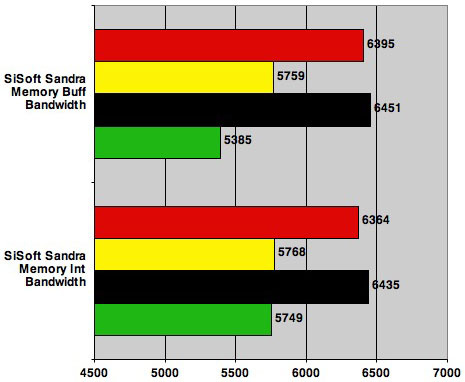
Bandwidths in MBps
Longer bars are better
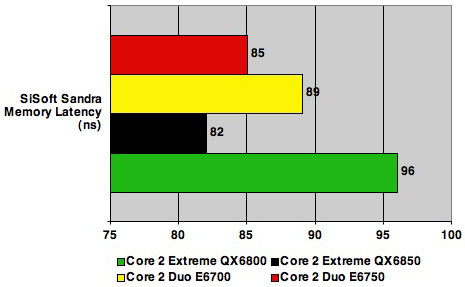
Latencies in ns
Shorter bars are better
When we were testing the E6750 we got the impression that it was throwing off noticeably less heat through the CPU coolerthan the E6700 was. We were using a Zalman CNPS8000 cooler with the fan turned down to a reasonably low speed to keep the noise down.
We decided to investigate further by running Intel's Thermal Analysis Tool. The software monitors the temperature of both cores on a dual-core processor and has the facility to drive the cores at full load. Unfortunately it gets confused by a quad-core CPU so you can't compare the figures for the QX6800 and QX6850 with the E6700 and the E6750 but even so they make for interesting reading.
Intel Thermal Analysis Tool results
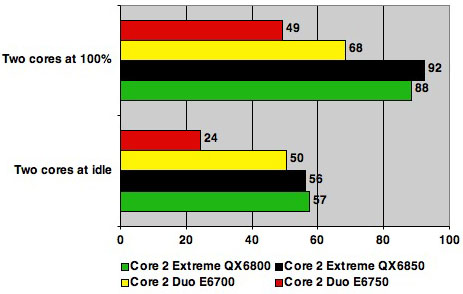
Temperatures in °C
When idle, the E6750 runs 26°C cooler than the E6700 and is 19°C cooler under full load. Those figures are clearly being read from the thermal diode in the processor core so you won't see a 20°C drop in the heatsink temperature, but there is a very noticeable difference in air temperature which is, of course, the reason we ran this check in the first place.
Verdict
The combination of reduced price, increased performance and lower heat output makes the Core 2 Duo E6750 a compelling buy. For the time being we're not sold on the P35 chipset or DDR 3 system memory, but that's fine as we're biding our time and waiting patiently for X38.